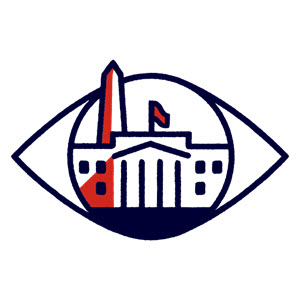IRS Notice 2018-92 Provides Guidance on Income Tax Withholding

On November 26, 2018, the IRS released Notice 2018-92, which provides interim guidance on Income Tax Withholding and IRS Form W-4 for 2019. The Notice presents important guidance on several withholding matters, such as:
- Suspension of the requirement to furnish a new Form W‑4 within 10 days of any reduction in allowances;
- Treatment of employees that do not furnish a Form W-4 to the employer;
- Addition of Section 199A pass-through entity deductions in determining withholding allowances on Form W-4;
- Clarification of alternatives ― such as the IRS online withholding calculator or Publication 505, Tax Withholding and Estimated Tax ― rather than the worksheets within Form W-4;
- Elimination of notices to the IRS that an employee subject to a "lock-in letter" is no longer employed; and,
- Changes to withholding rules related to pensions and certain other deferred income.
Background
The 2018 Form W-4 was delayed until February 28, 2018, in order to include law changes made by the Tax Cuts and Jobs Act, Pub. L. 115-97 ("TCJA"), such as changes in itemized deductions available, increases in the child tax credit, the new credit for other dependents, and the suspension of personal exemption deductions.
In June 2018, the IRS released a draft 2019 Form W-4 and instructions with significant proposed changes, intended to improve the accuracy of income tax withholding. However, as explained in the September 2018 Eye on Washington (Major Changes to IRS 2019 Form W-4 Deferred to 2020), the IRS postponed the redesigned form until 2020. The 2019 Form W-4 will be very similar to the 2018 Form W-4. The IRS will continue to work with stakeholders on potential changes for 2020.
The withholding regulations reflected in Notice 2018-92 make changes necessitated by the TCJA, other changes in the Internal Revenue Code (IRC) since the regulations were last amended, and "certain miscellaneous changes."
Key Provisions of IRS Notice 2018-92
Requirement to Furnish a New Form W‑4 Within 10 Days of a Change in Status Suspended Until April 30, 2019
Generally, if a "change of status" reduces the withholding allowances to which an employee is entitled, the employee must furnish a new Form W-4 within 10 days; or by December 1 of the current year, if the change affects the following year. In February 2018, Notice 2018-14 said that employees, who have a change of status solely due to TCJA changes, were not required to furnish new Forms W-4 to their employers during 2018. The IRS will continue this rule until April 30, 2019.
As an observation, this additional time enabled employees to better understand how the TCJA affected their personal tax situation before modifying their Form W-4 allowances. The IRS will expect taxpayers to re-examine the number of withholding allowances that they have established and, if necessary, furnish a new Form W-4 to the employer by May 10, 2019.
Treatment of Employees That Do Not Furnish a Valid Form W-4
Prior to TCJA, employees that did not furnish a valid Form W-4 were treated as single with zero withholding allowances. The IRS intends to modify regulations to provide that employees that do not furnish a Form W-4 will be treated as single, but will be entitled to withholding allowances as provided in Publication 15. Until such further guidance is issued, employees that do not furnish a Form W-4 should be treated as single with zero withholding allowances.
Estimated Deductions Permitted for Section 199A Deductions
Section 199A of the TCJA created a new 20 percent deduction for qualified business income of pass-through entities, such as Limited Liability Companies (LLCs).
Currently, additional withholding allowances are only permitted for specific items included in Treas. Reg. § 31.3402(m)-1(b), such as estimated itemized deductions. Notice 2018-92 provides that taxpayers may also include estimated deductions under Section 199A in determining the additional withholding allowances on Form W-4.
The IRS Withholding Calculator and Publication 505 Alternative Withholding Procedures
The Notice explains that future regulations will explicitly allow employees to use the withholding calculator (www.irs.gov/W4App) or Publication 505, Tax Withholding and Estimated Tax, instead of worksheets within Form W-4.
Generally, the withholding calculator determines the appropriate number of allowances to claim on Form W-4 and, if appropriate, an additional amount to withhold from each paycheck.
Instructions in the withholding calculator explain that certain taxpayers should use Publication 505 instead. This would include those who owe self-employment tax, alternative minimum tax or other taxes; those with long-term capital gains or dividends; or those with taxable Social Security benefits. Future regulations will provide that use of the withholding calculator is not permitted if the instructions specify that it should not be used because of the employee's individual tax situation.
Elimination of Notice Requirement When an Employee Subject to a "Lock-In Letter" Is No Longer Employed
Under Treasury Reg. § 31.3402(f)(2)-1(g)(2)(i), the IRS sometimes notifies employers to limit the number of withholding allowances for a particular employee. This notice is known as a "lock-in letter." Currently, when the employer no longer employs an employee who is subject to a lock-in letter, the employer must notify the IRS.
The IRS intends to eliminate this requirement. Pending issuance of further guidance, employers should not notify the IRS if an employee subject to a "lock-in letter" ceases to be an employee.
Changes to Withholding Rules Related to Pensions and Certain Other Deferred Income
Certain payments for pensions, annuities, and other deferred income are generally subject to withholding under Section 3405. In some circumstances, individuals may elect not to have withholding. Such withholding elections are generally made using Form W-4P, Withholding Certificate for Pension or Annuity Payments.
In February, Notice 2018-14 provided that, for 2018, the rules for withholding ― when no withholding certificate is furnished with respect to periodic payments under Section 3405(a) ― parallel the rules for prior years and are based on treating the payee as a married individual claiming three withholding allowances. For 2019, the same rules will continue to apply. Accordingly, for 2019, the rules for withholding when no Form W-4P is furnished for periodic payments under Section 3405(a) will generally treat the payee as a married individual claiming three withholding allowances, and apply that status to the 2019 withholding tables.
Comments Requested
Comments are requested by the IRS regarding the proposed guidance. Further regulations will also be proposed to reflect other changes made by the TCJA, and other matters affecting income tax withholding. Comments must be received by January 25, 2019, and should be submitted electronically to . Include "Notice 2018-92" in the subject line of any electronic submission.
For more details, see IRS Notice 2018-92 and/or Treasury Reg. § 31.3402.
ADP Compliance Resources
ADP maintains a staff of dedicated professionals who carefully monitor federal and state legislative and regulatory measures affecting employment-related human resource, payroll, tax and benefits administration, and help ensure that ADP systems are updated as relevant laws evolve. For the latest on how federal and state tax law changes may impact your business, visit the ADP Eye on Washington Web page located at www.adp.com/regulatorynews.
ADP is committed to assisting businesses with increased compliance requirements resulting from rapidly evolving legislation. Our goal is to help minimize your administrative burden across the entire spectrum of employment-related payroll, tax, HR and benefits, so that you can focus on running your business. This information is provided as a courtesy to assist in your understanding of the impact of certain regulatory requirements and should not be construed as tax or legal advice. Such information is by nature subject to revision and may not be the most current information available. ADP encourages readers to consult with appropriate legal and/or tax advisors. Please be advised that calls to and from ADP may be monitored or recorded.
If you have any questions regarding our services, please call 855-466-0790.
ADP, LLC.
One ADP Boulevard,
Roseland, NJ 07068
Updated on November 29, 2018



